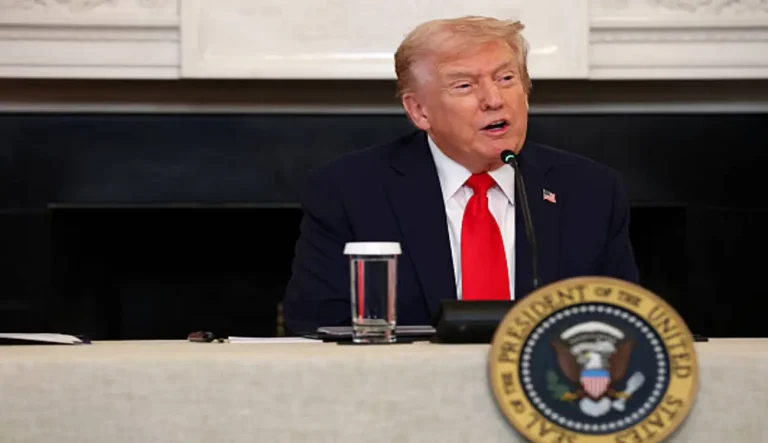
The Pentagon in Arlington, Virginia, US, on Wednesday, Oct. 15, 2025. Major media outlets rejected new Pentagon reporting limits. Al Drago/Bloomberg/Getty Images
Washington, D.C. , Oct 15 (Epicstorian News) — National news organizations announced they would not sign new reporting limits imposed by the Pentagon.
The decision comes after Defense Secretary Pete Hegseth unveiled updated guidelines restricting coverage of certain defense operations.
The group refusing includes Bloomberg News, five major television networks and The New York Times.
A joint statement said the organizations “cannot agree to restrictions that undermine our ability to report fully on national security.”
Pentagon Press Limits Aim and Backlash
The Pentagon says the press limits aim to protect sensitive operational data from being exposed.
The guidance mandates prior approval for reporting troop movements, drone strikes and other mission details.
Critics argue the restrictions curtail press freedom and public accountability on defense matters.
The news organizations’ refusal signals a clash between national security policy and media oversight.
Media Organizations Refuse the Policy outright
The news organizations highlighted that they must retain editorial autonomy over coverage decisions.
They said prior restraints would inhibit timely and accurate reporting of defense actions.
They added that such limits would compromise their responsibility to the public.
The joint group reaffirmed support for unrestricted coverage of military matters under the First Amendment.
Reactions from Press Freedom Advocates
Reporters Without Borders expressed concern that the Pentagon press limits threaten a healthy public discourse.
The Committee to Protect Journalists called the limits “unconstitutional and dangerous.”
An advocacy group said the policy would chill journalists’ willingness to probe military decisions.
They warned that military transparency would suffer and public trust could erode.
Legal and Institutional Challenges Ahead
Some media outlets are considering a legal challenge to block enforcement of the limits.
Legal experts note such prior restraint policies face significant First Amendment scrutiny.
Courts historically frown upon government mandates that censor speech before publication.
Experts suggest the dispute may land before the federal judiciary if no resolution emerges.
Defense Department Stands by the Policy
The Pentagon insists the limits are necessary to protect operational security.
It maintains that approved briefings and redacted reports can still inform the public.
A spokesperson defended the policy as consistent with existing classification rules.
The Department added that media officials would have procedures to request exceptions.
Process for Exceptions and Media Negotiation
The Pentagon says outlets may submit requests to bypass restrictions in special cases.
It proposes a review board with military and press representatives to evaluate requests.
The process is expected to include confidential deliberations and appeals.
The framework aims to provide flexibility while maintaining security controls.
Implications for Public Trust and Security Coverage
The media coalition’s rejection raises questions about future defense reporting in the U.S.
Journalists worry that routine defense coverage could become overly sanitized or delayed.
The Pentagon argues the policy would not prevent responsible reporting of key events.
The standoff may set precedent for how much control the government holds over security journalism.
International media watchers liken this conflict to past disputes in other democracies.
They note that press–state tensions over military coverage are common worldwide.
Observers say how the United States resolves it could influence global norms on press access.
It may test the balance between security needs and transparency in a leading democracy.
Any Potential Moves?
Media groups may escalate with lawsuits or congressional appeals.
The Pentagon may face congressional pressure to revise the policy.
Lawmakers on both sides may call hearings to address press access issues.
The stakes are high for how defense journalism operates in the U.S.
The dispute may shape future relations between the media and military institutions.
A resolution may require negotiation, compromise or judicial intervention.
Related: Trump threatens Democrats as US government shutdown halts federal operations
The conflict will test whether press freedom can coexist with operational security constraints.
The outcome could reverberate across journalistic and defense sectors.





